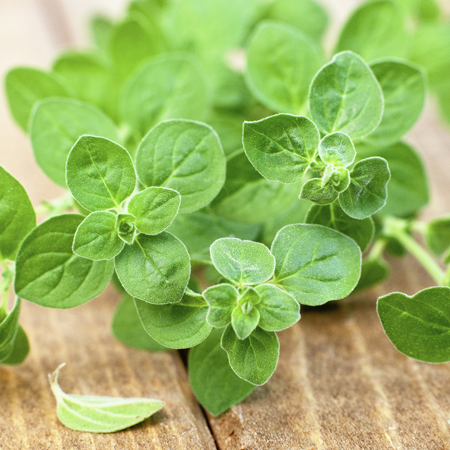

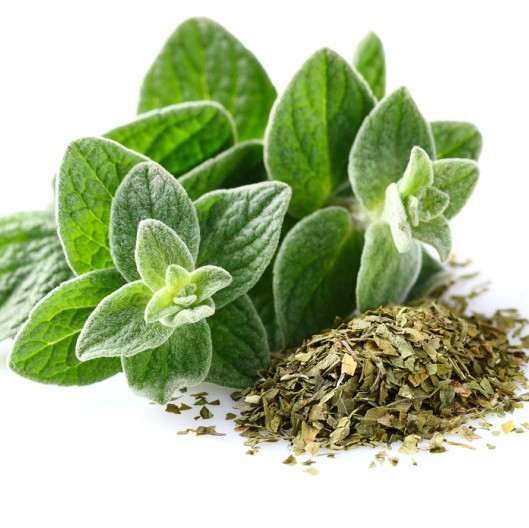
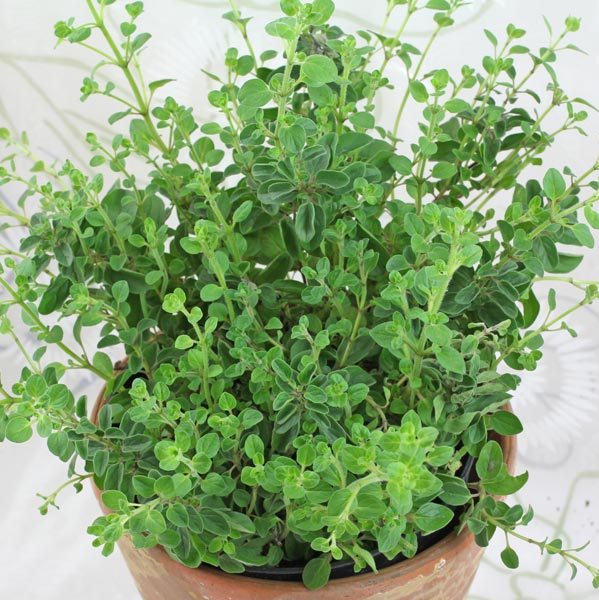
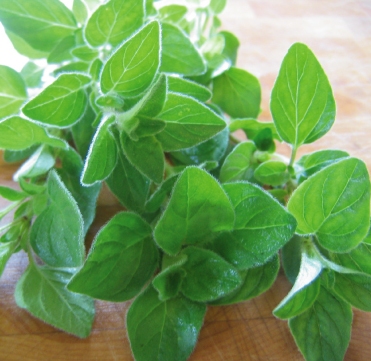
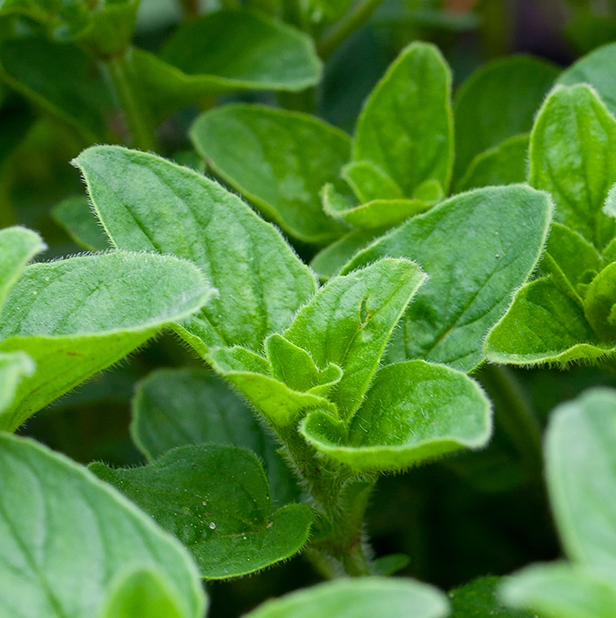
Botanical name Origanum compactum
Family Verbenaceae
Source Dried aerial parts of flowering plant
Origin Spain
Processing Method Steam distilled
Color/Consistency A thin, dark grey liquid.
Aromatic Summary / Note / Strength of Aroma A middle note with a strong aroma, Oregano Essential Oil has a powerful, spicy, camphorous scent.
Blend with Lavender, Rosemary, Bergamot, Chamomile, Cypress, Cedarwood, Tea-Tree and Eucalyptus.
Product Abstract
Oregano oil is derived from the leaves and flowers of oregano, a hardy, bushy perennial herb, and a member of the mint (Lamiaceae) family. It's native to Europe, although it grows in many areas around the world.
The plant grows up to 90 centimeters high, with dark green leaves that are 2 to 3 centimeters long. The ancient Greeks and Romans have a profound appreciation for oregano, using it for various medicinal uses. In fact, its name comes from the Greek words "oros" and "ganos," which are words for mountain and joy — oregano literally means "joy of the mountain."
It was revered as a symbol of happiness, and it was an ancient tradition to crown brides and grooms with a laurel of oregano. There are over 40 oregano species, but the most therapeutically beneficial is the oil produced from wild oregano or Origanum vulgare that's native to Mediterranean regions
History
Since oregano was originally grown in Greece, it was first used by the Greeks. They believed that this herb was created by the Goddess Aphrodite. She wanted it to be a symbol of joy growing in her garden. The word “oregano” comes from the Greek words oros, for “mountain,” and ganos, for “joy” meaning “ joy of the mountains”
Harvesting/Extraction Information
The essential oil of oregano is extracted through steam distillation of fresh oregano leaves, which bear the scientific name Oreganum vulgare. Its chief components are carvacrol, thymol, cymene, caryophyllene, pinene, bisabolene, linalool, borneol, geranyl acetate, linalyl acetate, and terpinene.
Common Usage
Caution
Although some people who are allergic to mint and other herbaceous perennial plants may experience some discomfort while eating or touching oregano, it is not commonly known as an allergenic substance. Also, the symptoms of an allergic reaction to oregano are very mild. Toss some oregano into your next meal and see just how beneficial it can really be
Key constituents
Carvacrol 61.6–83.4%
p-Cymene 4.9–9.7%
g-Terpinene 3.8–8.2%
Thymol 0–4.4%
b-Caryophyllene 1.4–2.5%
a-Pinene 0.5–2.2%
b-Myrcene 0–1.9%
a-Terpinene 0.8–1.4%
Quality Oregano oil may be adulterated by the addition of carvacrol and p-cymene.
Safety summary
Hazards Drug interaction; inhibits blood clotting; embryotoxicity; skin irritation (low risk); mucous membrane irritation.
Contraindications (all routes) Pregnancy, breastfeeding.
Cautions (dermal) Hypersensitive, diseased or damaged skin, children under two years of age.
Cautions (oral) Diabetic medication, anticoagulant medication, major surgery, peptic ulcer, hemophilia, other bleeding disorders.
Maximum dermal use level 1.1%
Our safety advice
Our dermal maximum is based on 87.8% total thymol and carvacrol content and a dermal limit of 1% for carvacrol and thymol to avoid skin irritation
Regulatory guidelines Has GRAS status.
Organ-specific effects
Adverse skin reactions Undiluted oregano oil was severely irritating to mice, and moderately irritating to rabbits. Tested at 2% on 25 volunteers it was neither irritating nor sensitizing. Oregano oil is non-phototoxic. In a CAM assay, a model for detecting irritants, Origanum onites oil with 57.4% carvacrol and 11.6% thymol was strongly irritating. This irritation was due to thymol and not to carvacrol.
Cardiovascular effects Origanum vulgare oil inhibits platelet aggregation, an essential step in the blood clotting cascade. An essential oil high in carvacrol significantly reduced plasma glucose concentrations in diabetic rats when given orally at 100 mg/kg/ day for 21 days.
Reproductive toxicity When Origanum vulgare oil was fed to pregnant mice for two weeks at 1,000 ppm, there was a related increase in the rate of embryonic cell death. Satureja khuzestanica, an essential oil consisting of 93.9% carvacrol, was given orally to pregnant rats during gestational days 0–15 at doses of 100, 500 or 1,000 ppm. There were no signs of maternal toxicity or teratogenicity at any dose, and in the two higher dose groups there was a significant increase in the number of implantation and live fetuses, a positive outcome.
Systemic effects
Acute toxicity Oregano oil acute oral LD50 in rats 1.85 g/kg; acute dermal LD50 in rabbits 480 mg/kg .
Antioxidant/pro-oxidant activity Origanum vulgare L. subsp. hirtum oil displayed antioxidant activity in chicken liver, muscle tissue and egg yolk and was significantly antioxidant in three different assays. The oil scavenged DPPH radicals with an IC50 of 0.17 mg/mL . Thymbra capitata oil had more than double the antioxidant potency of BHT in sunflower oil.
Carcinogenic/anticarcinogenic potential Oregano oil significantly induced glutathione S-transferase activity in mouse tissues. Origanum onites oil was not mutagenic in S. tymphimurium strains TA98 and TA100 with or without S9, and strongly inhibited induced mutagenicity in the same strains. Thymbra capitata oil was not mutagenic in either the Bacillus subtilis rec-assay or the Salmonella/microsome reversion assay. Origanum vulgare L. subsp. hirtum oil is reported to be non-genotoxic and antigenotoxic. An Origanum vulgare L. subsp. hirtum oil with 79.6% carvacrol caused complete cell death in two human cancer cell lines,Hep-2 andHeLa, at 0.01%. Carvacrol displays anticarcinogenic activity Drug interactions: Antidiabetic or anticoagulant medication, because of cardiovascular effects, above.
Comments
Oils from many origins may be offered as ‘oregano’ or ‘origanum’ oils. Wild marjoram oil is chemically similar to oregano oil. While most commercial oils are high in carvacrol, thymol chemotypes or thymol/carvacrol chemotypes are also found, though this is unlikely to significantly affect the safety profile of the oil. There is a chemotype of Origanum onites, with 80–92% linalool.